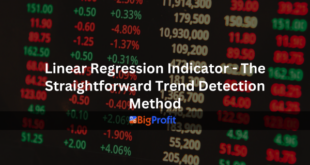Keltner Channels provide traders with valuable price signals in rapidly moving markets. Similar to Bollinger Bands, this volatility-based envelope indicator helps traders better time their entries and increase winning rates.
Developed by Chester Keltner and updated by Linda Raschke, the Keltner Channel utilizes average true range to define volatility bands. It provides an effective method of detecting directional trends as well as overbought/oversold conditions.
Trend Analysis
Keltner Channels are volatility-based trend indicators that help define trends and identify overbought or oversold conditions in the market. Similar to Bollinger Bands, Keltner Channels feature three lines that act as volatility envelopes around an exponential moving average – however unlike Bollinger Bands which use standard deviation as its measurement factor; Keltner Channels use Average True Range (ATR).
Price movements that break outside the channels often point to strong trends or breakouts that could signal breakout or potential reversals, providing traders with ample information for deciding their next trades. The channels provide clarity for traders looking for direction.
Traders typically place buy orders when an asset’s price reaches or touches either the upper channel line, or touches both it and its lower counterpart. But traders should remember that neither level should be used as stop loss levels; rather they should simply use them to confirm trend direction.
Lower and upper channel lines are calculated by applying a formula to the 20-day exponential moving average, typically two times ATR above and below it. ATR periods used can be customized to different trading timeframes and strategies; multiple ATR periods provide more robust protection from short-lived spikes while giving smoother indicators than Bollinger bands which use standard deviation as their basis.
Channels can also help traders detect trends. An asset’s price should frequently come close to either its upper or lower lines in a channel; traders can then identify bullish or bearish trends by monitoring the slope of these channels and looking for opportunities to jump aboard an up or downtrend based on this tool; when in an uptrend the price should cling tightly to its upper channel line while staying above middle line; during downtrend it might drift closer towards lower channel line and eventually dip below it altogether.
Support & Resistance
Keltner Channels can help traders quickly spot trends, assess pullbacks and identify trading ranges. The Keltner Channel indicator features three lines – with its middle line being an exponential moving average and two times ATR above and below it; its upper and lower bands expand or contract as volatility (measured by ATR) fluctuates; this makes Keltner Channels an invaluable trend analysis tool.
Dependent upon your asset and indicator settings, channels can serve as reliable support and resistance signals. For instance, an indicator’s upper band often serves as dynamic resistance in an upward trend while its lower band acts as dynamic support during downward trends. When price breaks through either one of these channel lines it indicates potential change in momentum and direction.
When prices move close to or past the channel middle line in an uptrend, momentum and direction of that trend remain positive. Conversely, when prices decline below this line it could indicate continued downward movement while pushing above it could signal that an upwards trend has resumed.
Keltner Channels are similar to Bollinger Bands in many respects, yet have some key distinctions that make them useful. While Bollinger Bands use standard deviation as their measure of volatility, Keltner Channels use differences between high and low prices on certain timeframes for volatility measurement – leading to smoother charts than Bollinger Bands charts.
As the default setting of this indicator is 20-period EMA, you can use its middle channel line as an entry point into trending markets. When trading with scalping strategies in mind, consider buying pullbacks near this line during an uptrend or selling rallies near its bottom channel line during a downtrend – the goal being to capture small portions of each big move rather than chase each trade blindly.
Your use of indicators in trading can make or break your success as an investor, so take care not to allow them to obscure price action. One effective way of doing this is practicing on a demo account before beginning real money trading with them.
Range Trading
Keltner Channels are an effective way for traders to make life simpler in real-time. While these conditions may seem obvious in retrospect, identifying them in real time can be more complex. Keltner Channels provide traders with an effective solution.
Keltner channels are volatility envelopes similar to Bollinger Bands in design but differ significantly in calculation. Their middle line uses an exponential moving average while their outer lines use Average True Range (ATR) instead of standard deviation for calculation.
Traders can utilize channels to identify trading opportunities in trending markets. The slope of the channel quickly indicates whether prices are moving up or down; an uptrend will likely follow along the upper line, providing traders an opportunity for buy orders when prices retrace back down to the middle line, while sell orders can be placed when price moves beyond its lower line.
If price reaches the top of its channel, this could indicate overbought conditions and it is wise to exit any long positions at that time. Conversely, if it drops beneath its lower line it could signal that bearish trend will likely resume.
A channel’s narrow shape also makes it ideal for identifying trading ranges. In a ranging market, price will often move within its upper and lower boundaries of the channel; as its width widens it becomes harder to trade within its confines.
Channels can help measure the strength of trends by highlighting when the ADX drops below 20, signalling less likely breakout of said trend and providing an opportunity for range trading strategies to take place. City Index accounts are ideal for practicing this approach with our range of stocks, indices, forex and commodities to practice this method without risking real funds. Try your hand today or read up with more by downloading our Guide to Beginning Range Trading for further guidance!
Complementary Indicators
The Keltner Channel is a volatility-based indicator designed to assist traders in recognizing price trends and pinpointing overbought/oversold conditions, providing breakout signals. Like any indicator, however, it should be treated as one component in an integrated approach; additional filtering may be necessary with other indicators.
Settings will determine how useful the Keltner Channel is for each trader’s trading needs. A longer EMA could cause price changes to lag behind and may not give as many definitive signals, while shorter EMAs will respond faster but could produce too many false positives.
As part of setting up their indicator, traders will want to choose an appropriate size for both upper and lower channels. In general, it is advised that upper bands be two times ATR above and two times ATR below middle channel lines respectively; since most price action will occur between these bands (the channel), any deviation outside this boundary could signal trend change or acceleration.
Example: If the price breaks above an upper channel line and then closes back within it, this could signal that momentum has shifted into bullish direction. Conversely, if price moves below lower channel but closes above it again after breaking out can signal bearish momentum shifting toward bulls.
The Keltner Channel is not a stand-alone indicator, but can be used alongside other indicators like MACD and ADX to enhance trading strategies by filtering out false signals in order to provide a fuller picture of market movements and trading opportunities. Together with an effective trading plan, these complementary indicators may make identifying profitable trades easier than ever before.
 BigProfit Profit through Algo & Technical Trading
BigProfit Profit through Algo & Technical Trading




